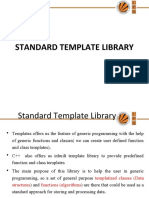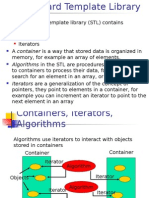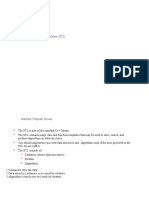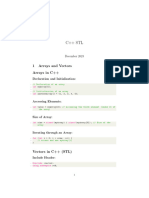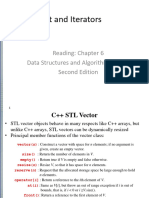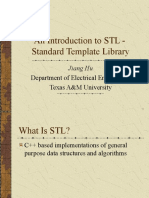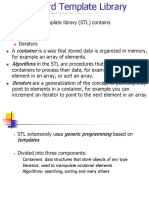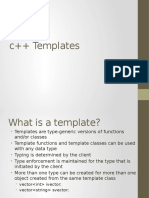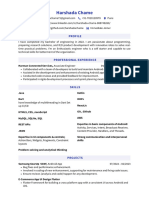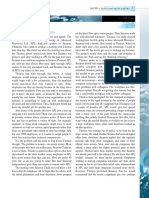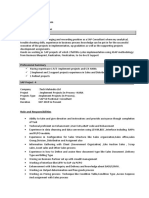0% found this document useful (0 votes)
35 views23 pagesSTL Unit V
The document provides an overview of various Standard Template Library (STL) containers in C++, including array, vector, list, stack, queue, map, and multimap, along with their common operations and syntax. It also covers algorithms such as find, count, sort, search, merge, for_each, and transform, detailing their purposes and examples. Each container and algorithm is introduced with header file requirements, declarations, and essential functions.
Uploaded by
tosem11071Copyright
© © All Rights Reserved
We take content rights seriously. If you suspect this is your content, claim it here.
Available Formats
Download as PDF, TXT or read online on Scribd
0% found this document useful (0 votes)
35 views23 pagesSTL Unit V
The document provides an overview of various Standard Template Library (STL) containers in C++, including array, vector, list, stack, queue, map, and multimap, along with their common operations and syntax. It also covers algorithms such as find, count, sort, search, merge, for_each, and transform, detailing their purposes and examples. Each container and algorithm is introduced with header file requirements, declarations, and essential functions.
Uploaded by
tosem11071Copyright
© © All Rights Reserved
We take content rights seriously. If you suspect this is your content, claim it here.
Available Formats
Download as PDF, TXT or read online on Scribd
/ 23


